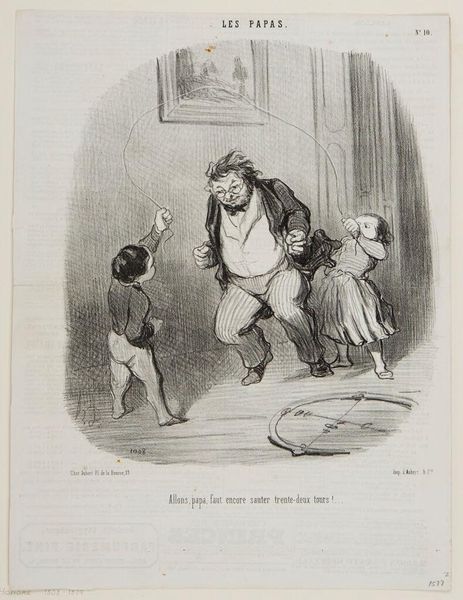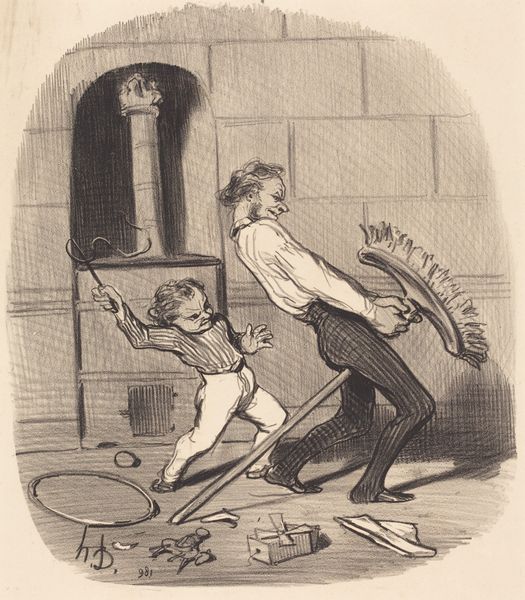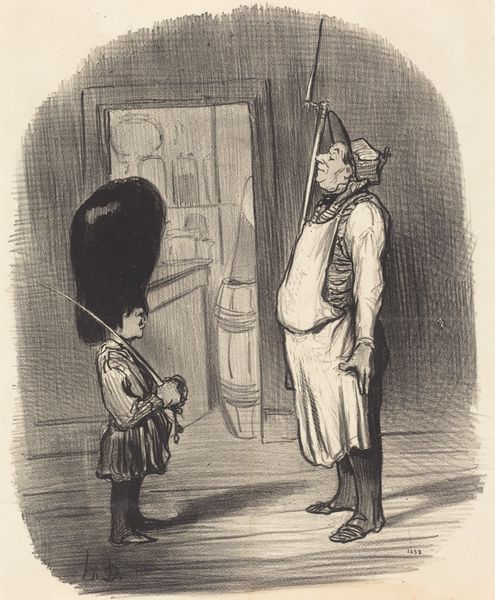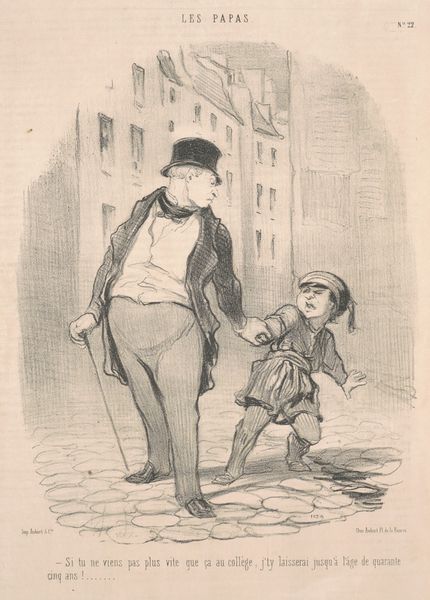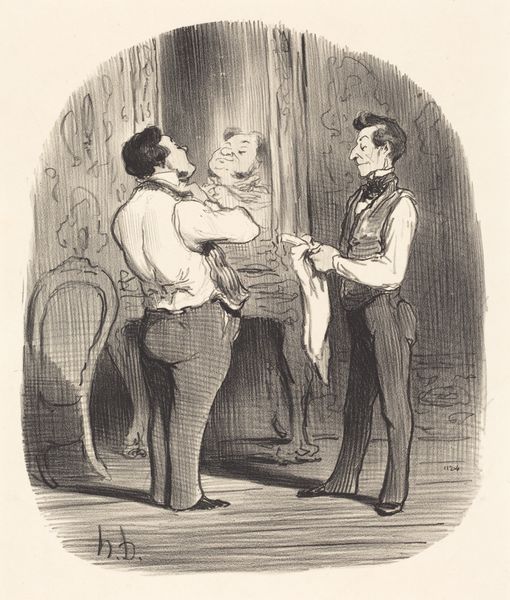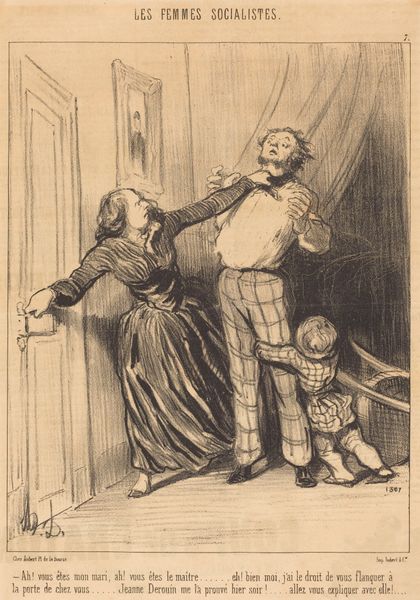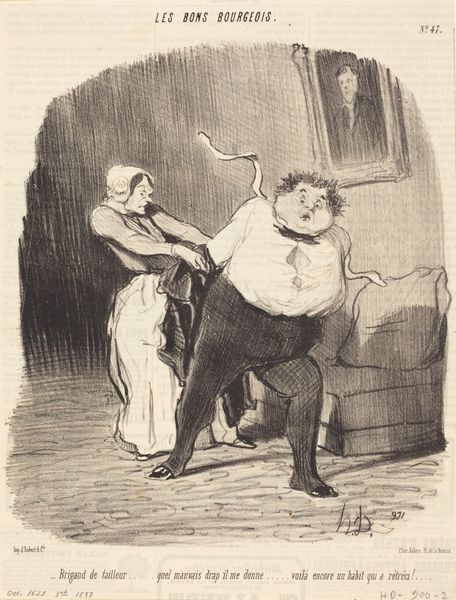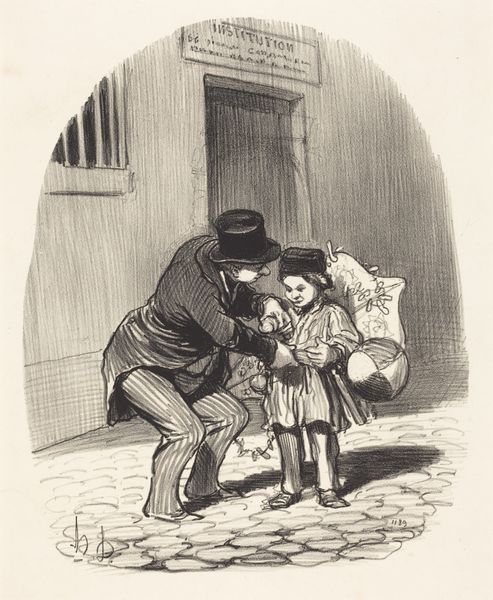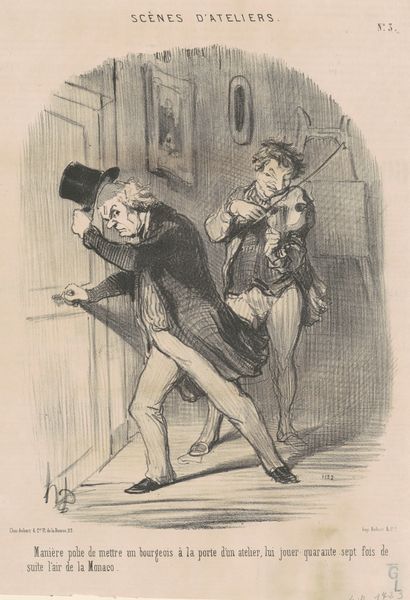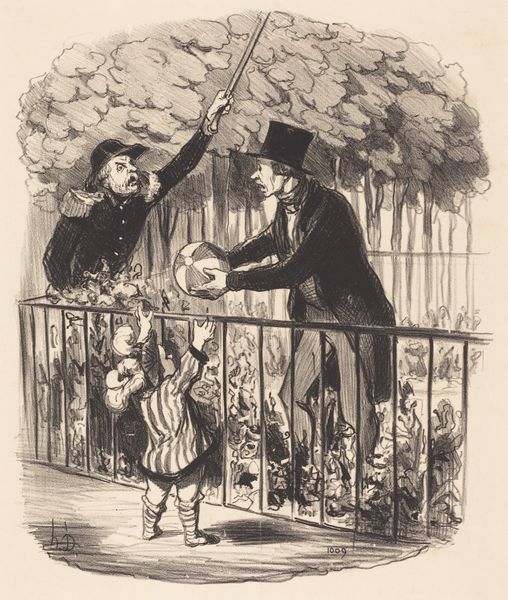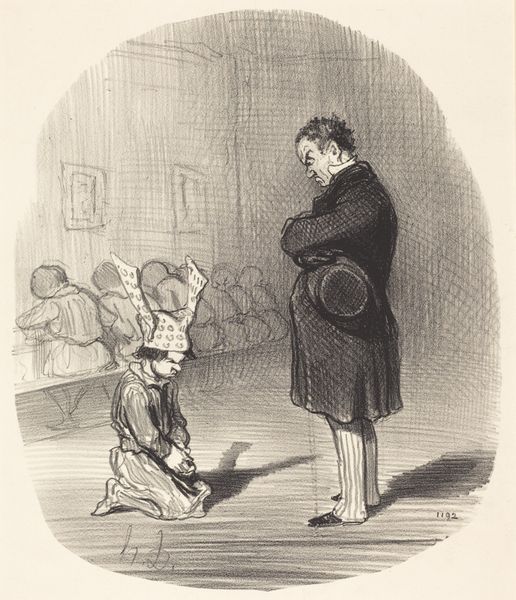
drawing, lithograph, print, pencil
#
drawing
#
comic strip sketch
#
imaginative character sketch
#
light pencil work
#
lithograph
# print
#
caricature
#
cartoon sketch
#
figuration
#
personal sketchbook
#
idea generation sketch
#
sketchwork
#
romanticism
#
pencil
#
sketchbook drawing
#
genre-painting
#
storyboard and sketchbook work
#
fantasy sketch
Copyright: National Gallery of Art: CC0 1.0
Curator: Immediately, there’s a frenetic energy to this drawing. Look at the father struggling to keep up as he's being put through the wringer by his kids. Editor: This is “Allons, papa… encore… trente-deux tours!…,” a lithograph by Honoré Daumier, created around 1847. It embodies Daumier's sharp observations on bourgeois life. The translation of the title reads roughly as: “Come on, Papa… again… thirty-two turns!…” Curator: And what do we see of that life? What kind of commentary do you think Daumier is offering here? Editor: I’d argue Daumier uses the emerging lithographic printing industry to investigate the construction of middle-class leisure and its impact on domestic labor. Consider the materials – this wasn’t fine art, meant for the elite. It was designed for mass consumption. This image would have been reproduced and sold widely. Curator: True. His work often appeared in satirical publications, which challenged the status quo through humor. Seeing a bourgeois man exhausted by play underscores a cultural shift—from a life dictated by work, to one complicated by newfound, though arguably shallow, modes of entertainment. Editor: Precisely. The etching focuses on a specific social performance of domesticity and family fun that the upper class would be interested in. You have a figure on the floor that seems to suggest broken machinery, but, nonetheless, domestic production will go on. Curator: The composition directs our gaze toward the father's strained face, the center of this domestic "performance," really revealing the expectations placed on fathers during that period and the very visible tension between patriarchal control and bourgeois entertainment. What kind of relationship does he truly have with these children? It makes you wonder. Editor: Ultimately, this is where we start thinking about how printmaking practices like lithography opened up new opportunities for social critique, while simultaneously revealing underlying labor and consumption patterns in French society. It shows that materials and process have political ramifications as well as just technical relevance. Curator: Agreed. It's about class consciousness. This piece uses a seemingly lighthearted moment to illuminate the societal structures and labor dynamics present within domestic life and question who this father really is. It serves as a historical mirror reflecting evolving concepts of identity. Editor: I see how this analysis sheds light on how ordinary moments like these have political relevance to working conditions.
Comments
No comments
Be the first to comment and join the conversation on the ultimate creative platform.

